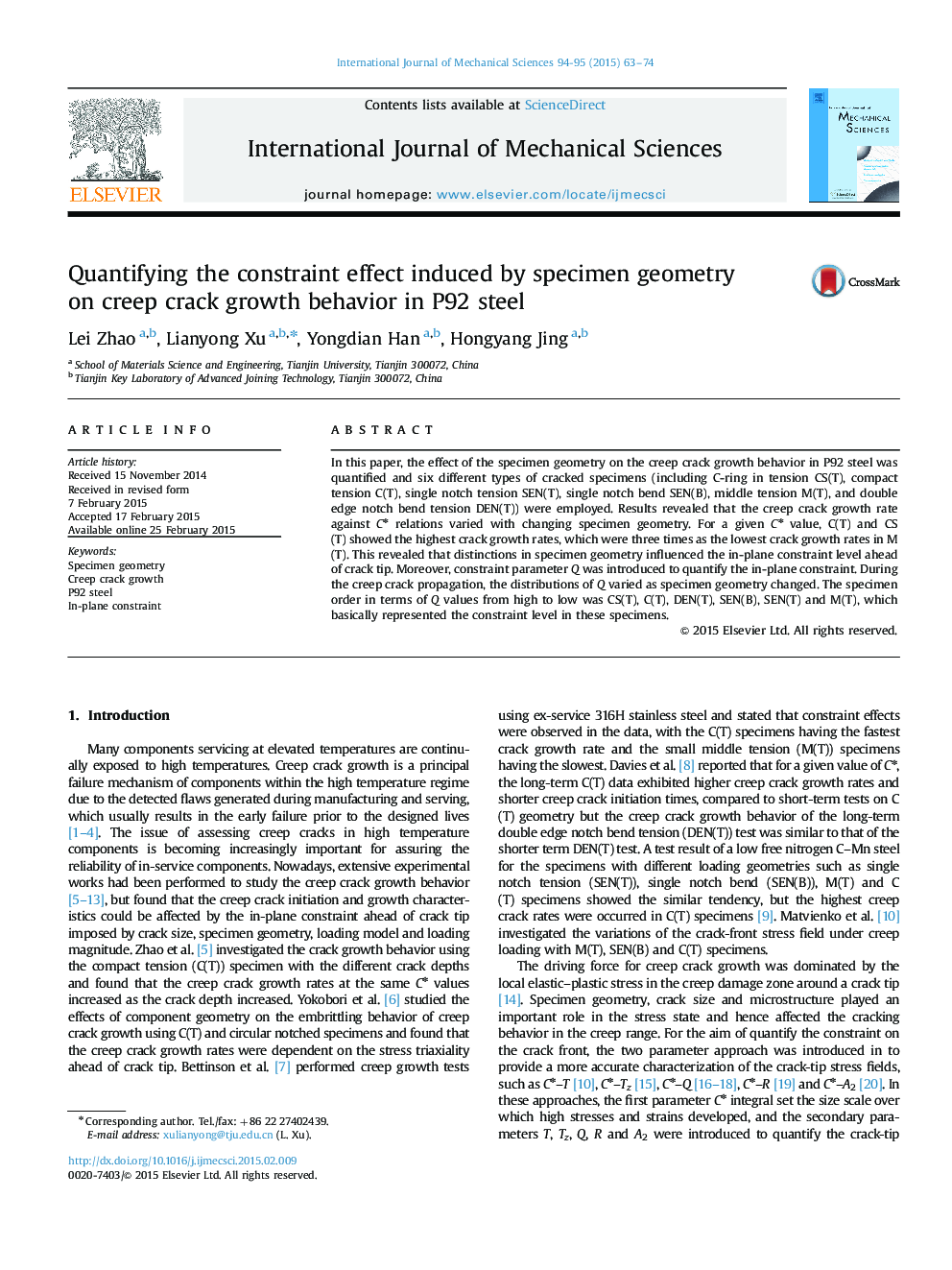| Article ID | Journal | Published Year | Pages | File Type |
|---|---|---|---|---|
| 782169 | International Journal of Mechanical Sciences | 2015 | 12 Pages |
•Effect of specimen geometry on creep crack growth in P92 steel is studied.•Relation between creep crack growth rate and C⁎ depends on specimen geometry.•Constraint level ahead of crack tip affects creep crack growth behavior.•Values of Q can represent the constraint level in different specimen geometries.
In this paper, the effect of the specimen geometry on the creep crack growth behavior in P92 steel was quantified and six different types of cracked specimens (including C-ring in tension CS(T), compact tension C(T), single notch tension SEN(T), single notch bend SEN(B), middle tension M(T), and double edge notch bend tension DEN(T)) were employed. Results revealed that the creep crack growth rate against C⁎ relations varied with changing specimen geometry. For a given C⁎ value, C(T) and CS(T) showed the highest crack growth rates, which were three times as the lowest crack growth rates in M(T). This revealed that distinctions in specimen geometry influenced the in-plane constraint level ahead of crack tip. Moreover, constraint parameter Q was introduced to quantify the in-plane constraint. During the creep crack propagation, the distributions of Q varied as specimen geometry changed. The specimen order in terms of Q values from high to low was CS(T), C(T), DEN(T), SEN(B), SEN(T) and M(T), which basically represented the constraint level in these specimens.
